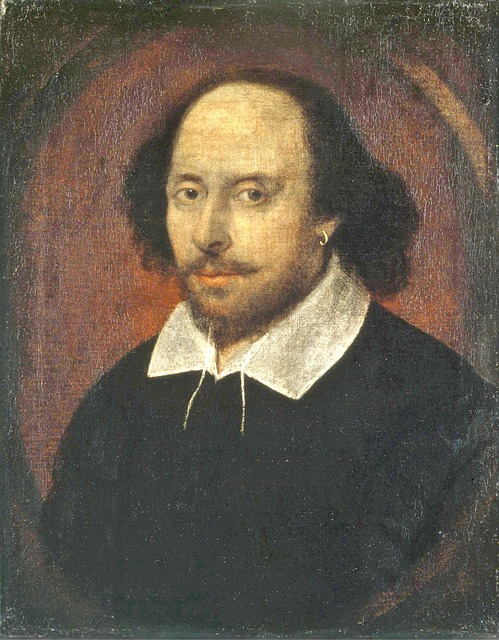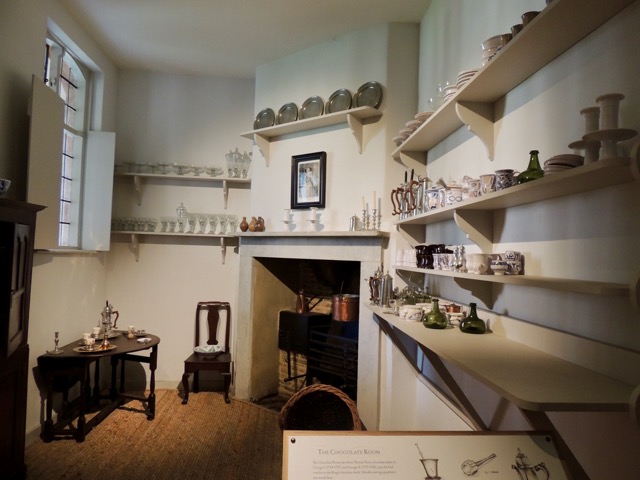Hampton Court Palace
From Londonhua WIKI
Hampton Court Palace
 Representative Article Image | |
| The Chandos Portrait of William Shakespeare |
|---|
Overview
Hampton Court Palace is a royal palace that is located in Surrey England. The palace started as a large barn on the manor of Hampton and has now celebrated its 500th anniversary as it focuses on visitors and tourism to celebrate it's rich history.
Contents
Background of the Palace
In 1236 the St. John Jerusalem acquired the Hampton manor and used it as a site to store produce and accounts. During the 14th century, the estate sat conveniently between the two royal palaces at Sheen and Byfleet. This made it the perfect staging post for royal visitors and it had a new building built to reflect its status as a guesthouse. But, when Byfleet was dismantled in the early 1400s, the importance of Hampton Court declines. In order to maintain the property it then was rented out, it’s first tenant the courtier Giles Daubeney. As the area of Hampton became more popular with the royal family Daubeney ended up playing host to Henry VII and his queen a number of times. After he died in 1508 the Hampton Court received its next occupant, Thomas Wolsey. Wolsey was a close friend of the new King Henry VIII and on the rise in the political hierarchy. He ended up building a vast palace complex, transforming the grand private house in a bishop’s palace. He also added a new private chamber for his own use as well as three suites for the new royal family. It was during his time as a tenant in the 1520s that Hampton Court hosted important European delegations, mainly for doing deals and signing treaties that would help improve England’s position in Europe. It was in 1528 Wolsey lost Hampton Curt to Henry VIII after Henry tried and failed to divorce Katherine. Henry finished his building works at Hampton Court in about 1540, these included tennis courts, bowling alleys, gardens, and kitchens that covered more them 36,000 square feet. When Henry died in 1547 Hampton Court continued to play an important part in the lives of Henry’s 3 surviving children, Prince Edward and his older sisters Mary and Elizabeth. Each of the children used Hampton Court as a place to retreat away from the business of politics in central London. Not much was added to the palace and in 1603 when James I became king of England the palace provided excellent hunting in the park. It also served as a venue for plays, dances, banquets, and court masques. In 1645 Parliamentary troop seized the palace and began to make an inventory of the royal possessions before putting them up for sale. When the monarchy was restored in 1660 Charles II preferred Windsor Castle to Hampton Court but, he did build a new set of lodgings at the southeast corner of the palace for one of his mistresses and her illegitimate children by him. It wasn’t until 1737 that the royal family stopped using the entire palace. After the royal family left Hampton Court the palace and its apartments found another purpose, it was divided for residents who were granted rent-free accommodation due to their great service that had given to the country or crown. In 1838 Queen Victoria ordered that Hampton Court Palace ‘should be thrown open to all her subjects without restriction’. It was also around this time that antiquarians and architects showed increasing interest in the surviving parts of the historic Tudor palace. Between 1838 and 1851 about £7,000 a year was spent on restoration. In the 1970s and 1980 more exhibitions were introduced to the State Apartments, but it was all put on hold in 1986 when a fire severely damaged a large part of the King’s Apartments.
The Gardens
Surrounding the palace on every side except for the front is the gardens. The gardens were used to grow vegetables for the kitchen and a retreat for the royals who needed some fresh air. The gardens were turned into a huge tourist attraction for visitors who visit the palace now. To learn more information about each specific garden, click here.
The Chapel Royal
The Chapel Royal is a part of the Ecclesiastical Household of Her Majesty the Queen. The services in the church are very traditional and the church is still active today, as it has been for the last 500 years. All are welcome to attend daily services at the chapel, as well as services on Sundays and on Holy Days. The chapel was built in the palace in the late 1520s by Cardinal Thomas Wolsey and was later embellished by Henry VIII. It was restored to the original Baroque style by Sir Christopher Wren for William III and Mary II, and Queen Anne. To read more about the Chapel Royal click here
William III's Apartments
The staircase leading to the apartments is surrounded by the painting 'Victory of Alexander over the Caesars'. The guard chamber showed that William III was a soldier and peacemaker. The walls are lined with 2871 pieces of weapons and armor. This room was run by the Yeoman of the Guard. Adjoining that room is the King's Presence Chamber. This room was used by William III to greet high ranking guests from his throne. He made everyone bow to his throne, even if it was empty. Next door is the Privy Chamber. This room was home to all ambassadorial visits and the most formal occasions. Lining the walls are tapestries of Henry VIII's 'Story of Abraham' and a portrait of the winter queen. To complete the row of rooms are the bed chambers. The great bed chamber acted as a dressing room for the king. Only the most privileged guests where allowed in to watch him get ready for the day. He slept in the Little Bedchamber. The only people allowed to enter this room were guests and the bed chamber staff.
The Palace
The King's Beasts
At the front of the palace are 10 statues of heraldic beasts. These statues represent King Henry VIII and his wife, Jane Seymour's, ancestry. These are unlike the Queen's Beasts in Kew Garden's which represent the genealogy of Queen Elizabeth II. These beasts at the Hampton Court Palace stand watch on the bridge and above the moat of the Palace. They are symbols of protection for the great gatehouse. These beasts are the lion of England, the Seymour lion, the Royal dragon, the black bull of Clarence, the yale of Beaufort, the white lion of Mortimer, the White Greyhound of Richmond, the Tudor dragon, the Seymour panther and the Seymour unicorn.
The Chocolate Kitchen and Room
Right off of the Fountain Court you will find a rare chocolate kitchen that was used by the personal chocolate maker to King George I and King George II, Thomas Tosier. He made chocolate from 1714-1760. Henry Stubbe stated in The Indian Nectar or a Discourse Concerning Chocolate that, "This is the Royal Chocolate, being the best and most wholesome and which is drunk by the Nobility and Persons of the best rank." In the kitchen there is a fireplace that was used to roast the cocoa beans. In the chocolate room is where the final touches where made to the King's chocolate drink. Chocolate, being a lot more expensive than coffee or tea was considered a luxury. They would put exotic spices in it and serve it in gold and silver chocolate pots, and they would drink the drink form porcelain cups.
The Future
Throughout the historic royal palace there are black partitions blocking off areas that are under current construction. The largest one is right outside the palace's main entrance.The black wall is blocking Apartment 39 Garden Railings, as it is in the process of 'conserving history'. Workers are currently repairing the railings and re-landscaping the gardens. To keep with the history, the railings are being repainted to their original dark green. There is current archaeological excavations taking place of the foundations to better understand the gardens. Work is being done thanks to the Historic Royal Palaces annual funds program of conservation. The funds are collected from our individual ticket sales since the government offers no funds to maintain the palace.
So well visitors may be disappointed in a blocked area it is the way of conserving the great Hampton Court Palace for years to come.
References
External Links
If appropriate, add an external links section
Image Gallery
- HCP3JacobDupuis.jpg
- HCP2JacobDupuis.jpg
- HCP1JacobDupuis.jpg
